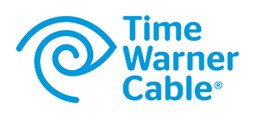 Earthlink and Time Warner Cable are two independent companies, but you would never know it from Time Warner Cable’s mailed notification of rate increases that will apply to customers of both. In addition to general rate increases, Time Warner is now imposing its $5.99 monthly modem rental charge on Earthlink customers that used to avoid the modem fee.
Earthlink and Time Warner Cable are two independent companies, but you would never know it from Time Warner Cable’s mailed notification of rate increases that will apply to customers of both. In addition to general rate increases, Time Warner is now imposing its $5.99 monthly modem rental charge on Earthlink customers that used to avoid the modem fee.
The cable company has also seen fit to add a considerably higher monthly fee for “The Guide” — which refers to the on-screen guide offered through your set-top box. Love it or hate it, it will now cost you an extra $3.27 per month per cable outlet.
Your Time Warner Cable basic television package now called “Preferred TV” will now cost about $2.50 more per month, ranging from around $79 in Maine to $82.50 in Buffalo.
Other increases:
- All cable TV customers should expect to see a new Broadcast TV Fee surcharge applied to their bills after the rate increase takes effect. In the northeast, it runs $2.25 a month;
- Time Warner’s Variety Pass, which includes semi-premium movie channels is increasing to $10 a month in many markets. That is up around $1;
- Your primary set-top box rental fee will increase from $8.99 a month to $10.25 a month. Each additional box will increase from $8.49 to as much as $10.25 a month, depending on the market;
- Your broadband price may also be increasing. Lite Internet will be $37.99 a month, Basic $47.99, Standard $57.99, Turbo $67.99, Extreme $77.99, Ultimate 50 $88.99;
- Earthlink customers will now pay $37.99 for Earthlink Lite and $57.99 for Earthlink Standard. Earthlink’s turbo upgrade costs an extra $10 and TWC’s $5.99 monthly modem rental fee will now apply unless you buy your own modem;
- Customers with extra cable outlets installed after the new rates take effect will now owe an extra service fee of $1.50 per month per outlet.
Customers on promotional packages will not see the new rates applied to their accounts until after their promotions expire. Rate increases are generally rolled out region-by-region over the course of the year. These rate increases will apply to customers in the northeastern United States beginning with the March or April invoice.


 Subscribe
Subscribe
In competitive markets pricing reflects marginal cost across all layers and boundary points. 100% of demand is addressed and the resulting “ecosystems” of supply tend to be highly generative. In monopoly markets pricing reflects average cost and in the process the top and bottom quintiles of demand are “priced” out of the market. In classical terms the bottom is addressed by subsidies and universal service, while the top quintile builds its own private solutions (aka enterprise customers). The monopoly system is not sustainable over time as technology improvements and network effects drive the marginal cost of capacity down 20-40% annually.… Read more »
…
$88.99 for Ultimate 50? That’s a little less than I’m paying now…on promo!